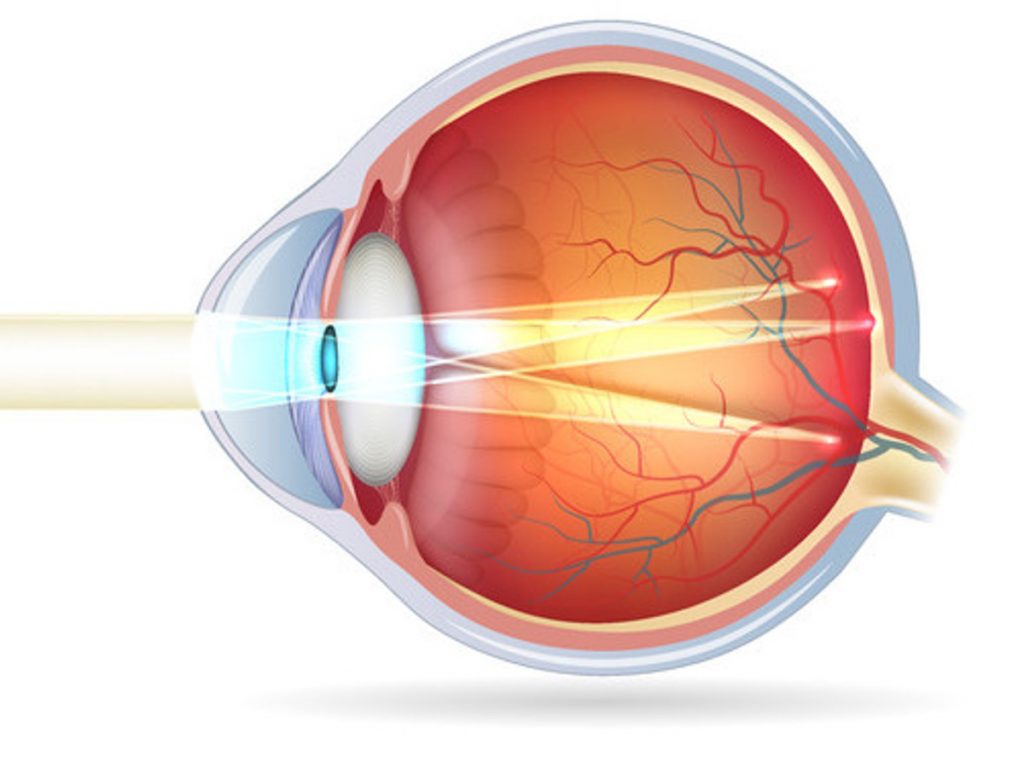Astigmatism is one of the most common causes of reduced visual acuity in children. This is a visual defect caused by a change in the shape of the cornea, eye lens, or the eye itself. Due to incorrect projection of light on the retina, the patient sees distorted images of various objects. This is a serious abnormality in the visual system. Imagine about 40% of the cortex is engaged in servicing the visual system, and the remaining 60% solve all other tasks. Astigmatism may lead to serious complications, as it affects the formation and development of the visual system. Therefore, the treatment should be started timely.

In 95% of cases, we succeed in achieving a high visual acuity and cancel the glasses correction in the case of various types of astigmatism.
Modern technologies of treating astigmatism, which are used in Yasny Vzor, differ from the generally accepted ones, thus, we not only do not adhere to the outdated point of view about incurable astigmatism but also destroy the following myths:
We can fully compensate for astigmatism up to 2.5 diopters without surgery.
We have figured out why there is a concept of "uncorrected astigmatism." In the case of this disease, vision loss is of a specific nature since the eyes have two focuses and vision decreases irregularly. Further, we developed a method for selective vision in the part of the visual system that is associated with poor focus. And this technique leads to a very rapid recovery of vision.Our most high-precision, versatile, and fast MEL90 laser, in contrast to outdated models, allows treating very high degrees of astigmatism.
Using the achievements of modern ophthalmology, we achieve high visual acuity and the cancellation of glasses correction in children with various types of astigmatism in 95% of cases.
We select the method of treatment that depends on the severity of visual impairment, the signs of complications, the age of the child, and the individual characteristics of its body (the presence of indications and contraindications to a particular method of correcting astigmatism):
The main problem with astigmatism is the deterioration of visual acuity. The following are among the complications of astigmatism:
This visual defect is usually congenital. It is more difficult to independently determine astigmatism in a child under 3 years of age since young children do not notice vision problems and cannot correctly formulate complaints about the poor vision of objects. If one of the parents has astigmatism, the newborn should be attended with an ophthalmologist in the first months of life.
The following are among the main symptoms of astigmatism:
Most often, an optical disorder is associated with a hereditary factor. In some people, the presence of a visual defect is predetermined genetically, that is, the disorder of the sphericity of the cornea and the correct shape of the eye lens is transmitted from parents. If at least one of them has this pathology, most likely, it will be found in the child. In this case, we are talking about congenital astigmatism in children.
Astigmatism often develops at an early age. In this case, we are talking about acquired astigmatism, which appeared in the child as a result of external influence on the eye area:
This visual impairment occurs in most people but may not cause them discomfort if it does not reach 0.5 diopters. This type of defect is called physiological astigmatism and does not require correction. It is more difficult to identify vision problems at home for the following reasons: children often do not notice that they do not see well; the child does not know how to explain its symptoms.
Only an ophthalmologist can make a precise diagnosis after a profound examination of the child. It is recommended to visit a specialist every year; newborns can be appointed after they reach the age of 2 months.
The following diagnostic methods are used to detect visual impairment: